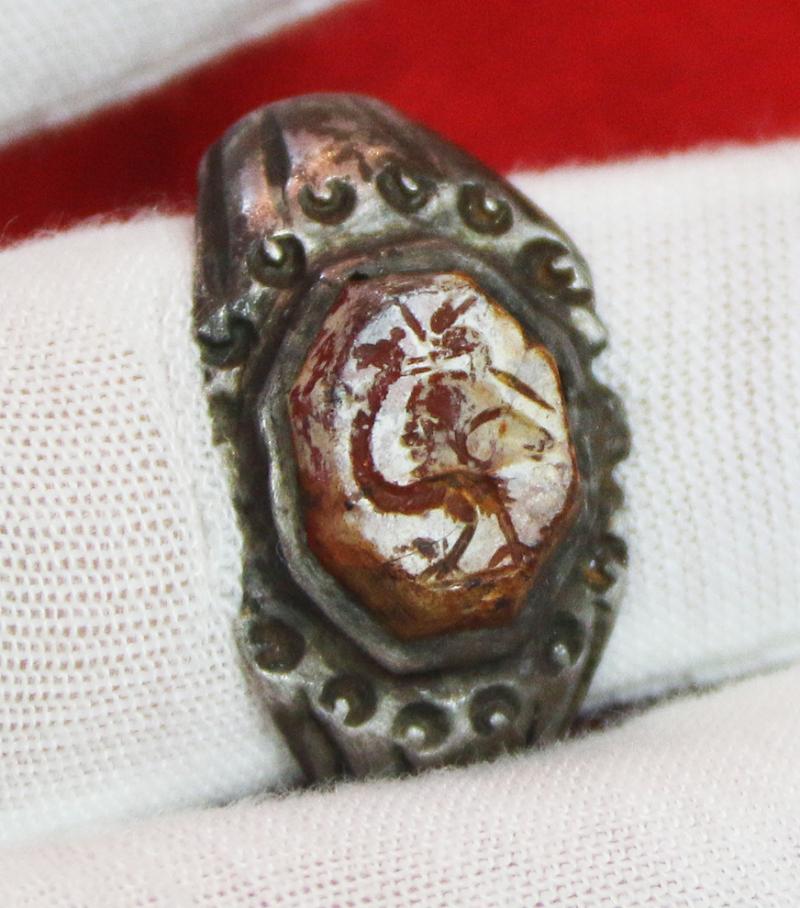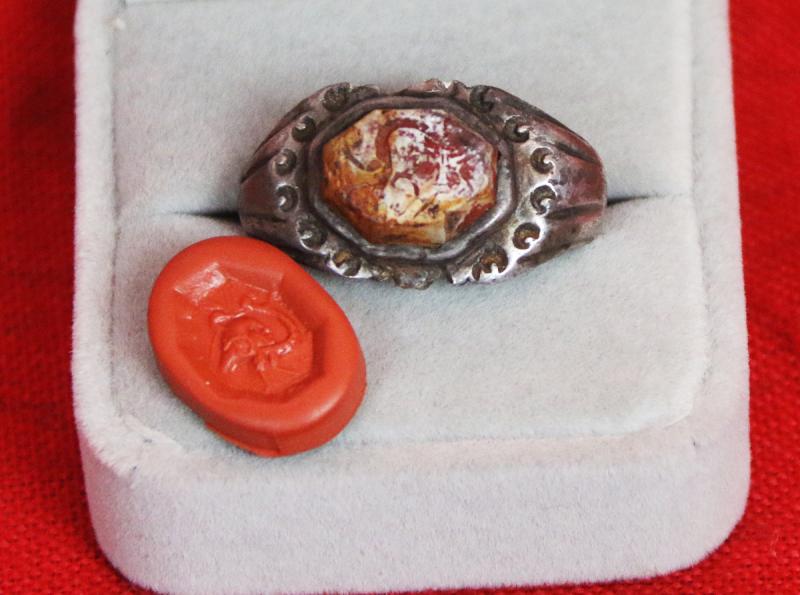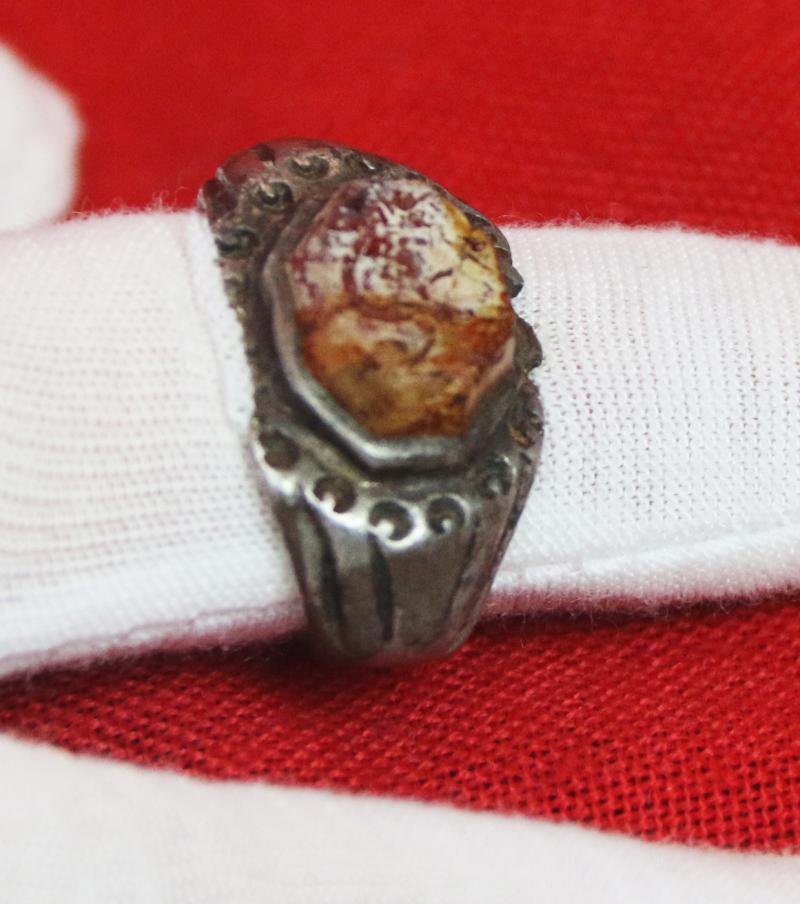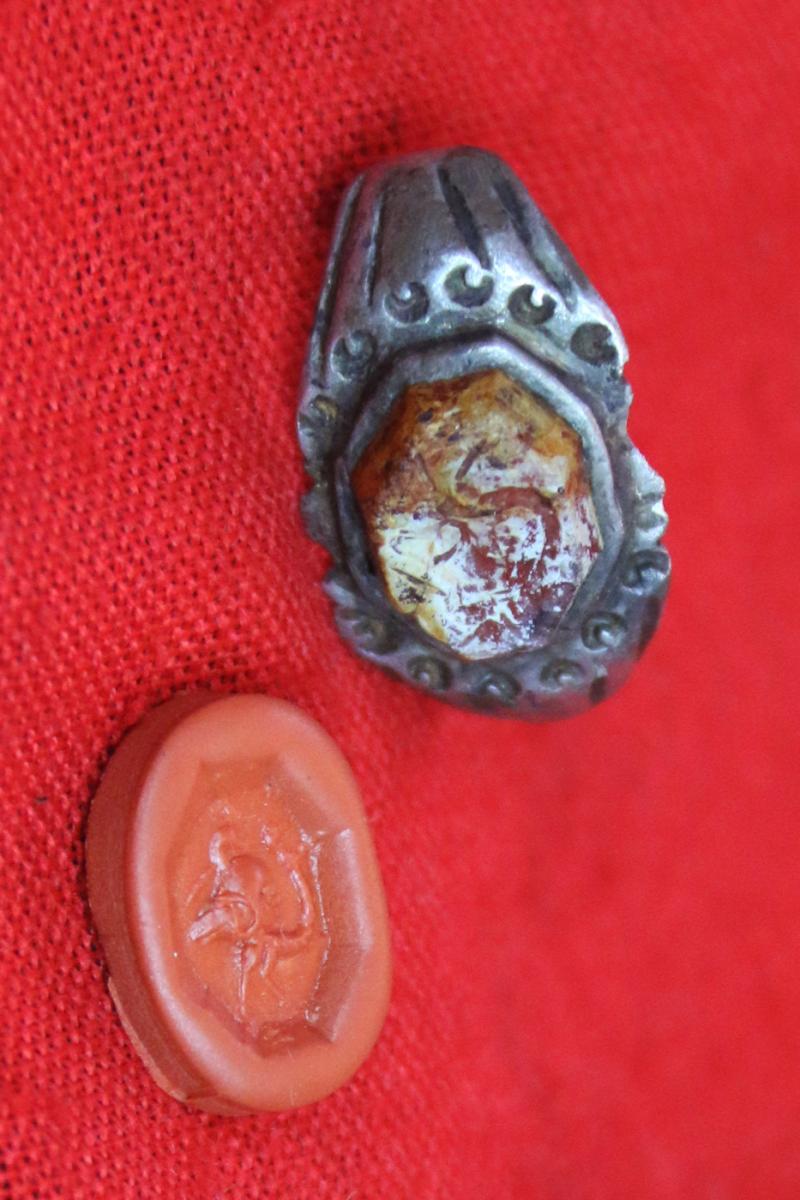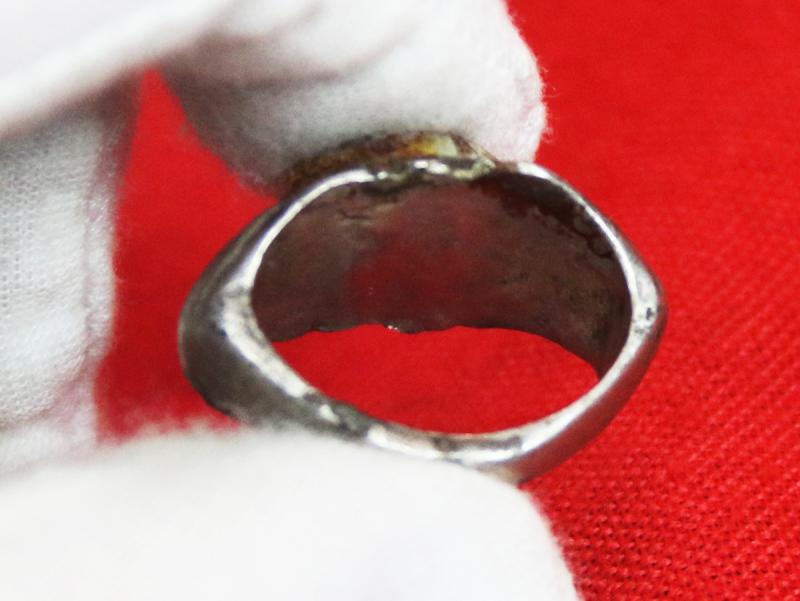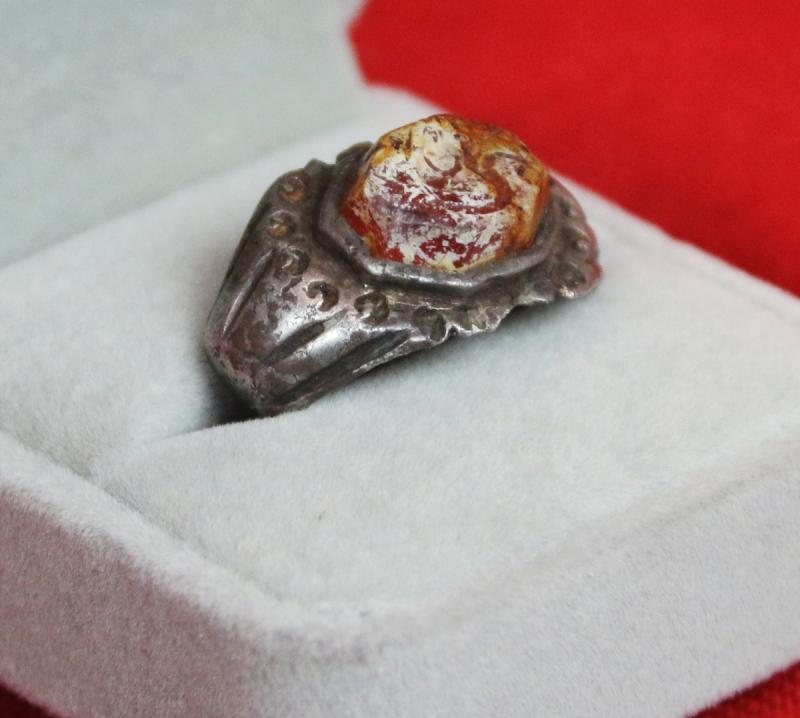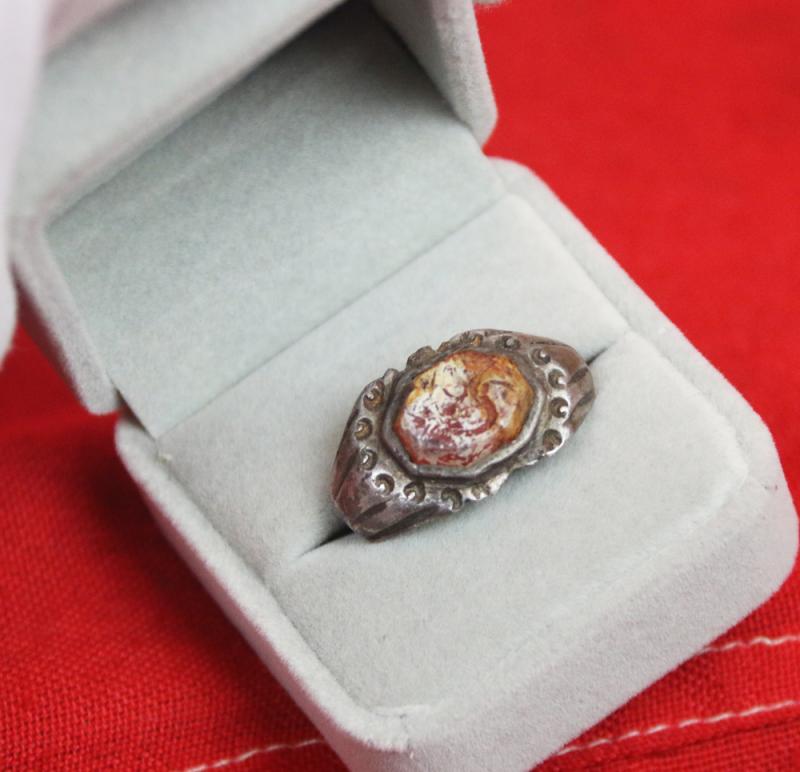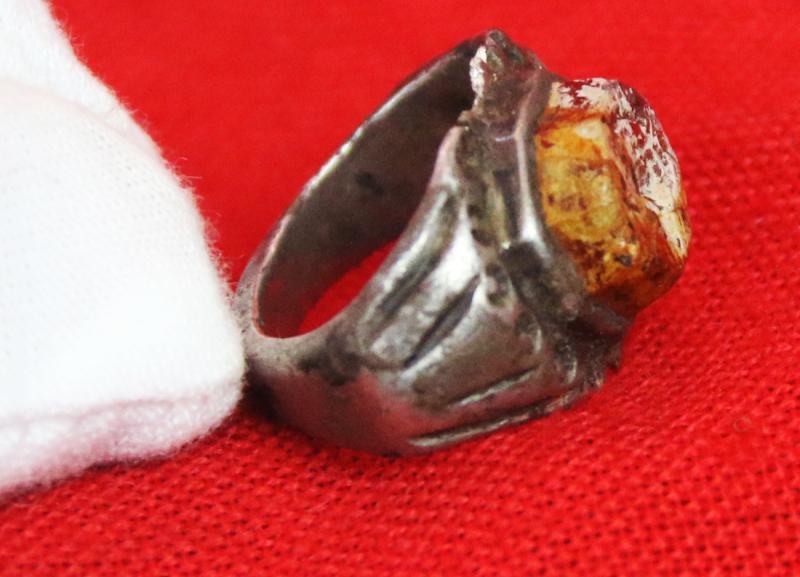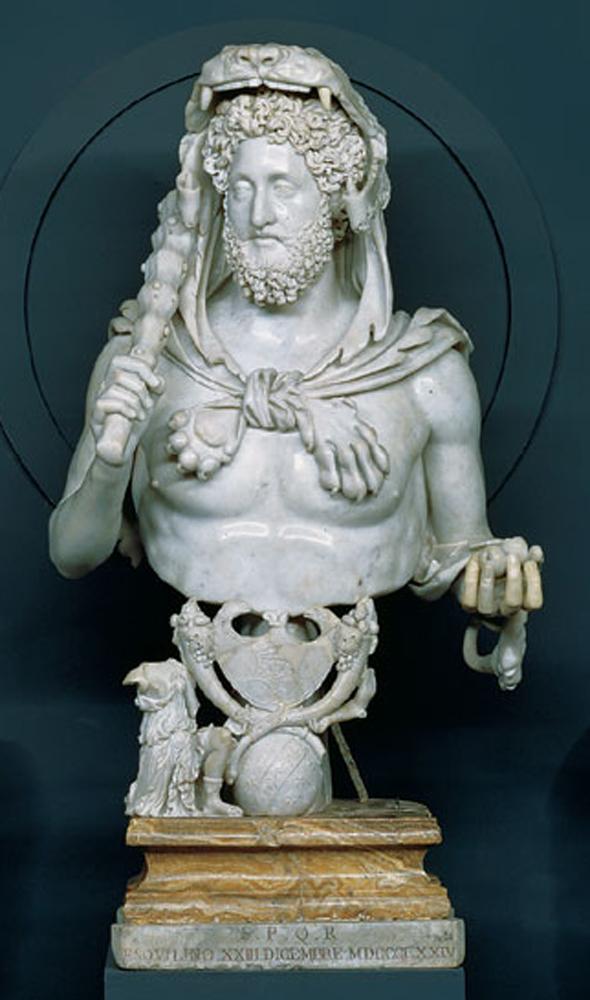Ancient Roman Silver and Gemstone Intaglio Carved Seal of a Mythical Gryllus, Late 2nd to Early 3rd Century, From The Era of Emperors Marcus Aurelius, Commodus To Septimus Severus
A Roman noble or patrician's silver seal ring, with a carved intaglio, in likely a natural carnelian, of a Gryllus. Classified by the seminal classification of ancient ring forms, by Dr. Martin Henig, as Ancient Roman, Henig type VIII
The gryllus is a hybrid being is composed of Silenus head, an equine protome, a ram head chewing an ear, rooster legs and tail.. 1st-2nd century A.D.Fantastical combinations of human heads and animal parts are known as grylloi.
According to Plutarch they had apotropaic properties to ward off the evil eye: 'it is thought that the objects said to act as safeguards against the evil eye derive their efficacy from their strangeness which attracts the evil eye and thus lessens its force against its victims.'
Grylloi, derived from the Italic word grillo ("freak") and the Latin gryllus ("caricature"), were popular subjects for the ancient Romans. Artists reportedly enjoyed creating these fantastic creatures with all combinations of parts, although certain combinations seemed to be more popular than others. While undoubtedly extremely amusing to the Romans, grylloi served a more serious purpose as well; they were thought to be talismans that acted as protection against the evil eye.
For a related example, see accession number 41.160.655 in the Metropolitan Museum of Art's collection of Greek and Roman Art.
Ref: Richter, Gisela M.A., Catalogue of Engraved Gems: Greek, Etruscan, Roman, New York: The Metropolitan Museum of Art (1956), p. 114.
During the era of Emperor Marcus Aurelius, 161 to 180 ad, the last part of his reign was dramatically represented in the blockbuster film 'Gladiator', starring Richard Harris as the Emperor. He acceded to the throne of Emperor alongside his adoptive brother, who reigned under the name Lucius Verus. Under his rule the Roman Empire witnessed heavy military conflict. In the East, the Romans fought successfully with a revitalised Parthian Empire and the rebel Kingdom of Armenia. Marcus defeated the Marcomanni, Quadi, and Sarmatian Iazyges in the Marcomannic Wars; however, these and other Germanic peoples began to represent a troubling reality for the Empire.
Commodus. the successor and son of Marcus Aurelias, was the Roman emperor who ruled from 177 to 192. He served jointly with his father Marcus Aurelius from 177 until the latter's death in 180, and thereafter he reigned alone until his assassination. His reign is commonly thought of as marking the end of a golden period of peace in the history of the Roman Empire, known as the Pax Romana.
Commodus became the youngest emperor and consul up to that point, at the age of 16. Throughout his reign, Commodus entrusted the management of affairs to his palace chamberlain and praetorian prefects, named Saoterus, Perennis and Cleander.
Commodus's assassination in 192, by a wrestler in the bath, marked the end of the Nerva–Antonine dynasty. He was succeeded by Pertinax, the first emperor in the tumultuous Year of the Five Emperors.
Rings of the higher ranks were often embellished with intaglios, cameos and precious gemstones. Mythology and Roman history were used as a repertoire of decorative themes. Roman rings featuring carved gemstones, such as carnelian, garnet or chalcedony, were often engraved with the depiction of deities, allegories and zoomorphic creatures
Ref; Plutarch,Quaestiones Convivialis, V, 6, 681 F ff. For other grylloi, see G.M.A. Richter, Catalogue of Engraved Gems: Greek, Etruscan, and Roman, Rome, 1956, p. 539 ff; no.
Carnelian Agate: Stone of Courage and Leadership Carnelian Agate is a form of Chalcedony, It occurs in beautiful, rich shades of orange, interspersed with white.As with all our items it comes complete with our certificate of authenticity.
2.35cm across, 11.7 gms
Code: 24774
2750.00 GBP

